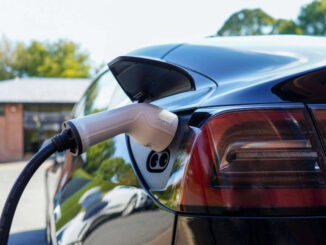
Houston, 23 December (Argus) — Across electric vehicle (EV) supply chains, automakers, battery makers and materials companies expect more projects to come on line in 2023, while some forecast long-term problems.
Battery Cells
Multiple major lithium-ion cell factories plan to open in 2023 in anticipation of EV production that will follow in the coming years, supporting battery material demand as they ramp up.
The General Motors (GM) and LG Energy Solutions (LG) joint venture is opening its second factory in late 2023 in Tennessee with a capacity of 50 GWh/yr. South Korean battery maker SK Innovation also plans to complete the second 11.7 GWh/yr facility in Georgia in 2023 to bring its complex in the state to 21.5 GWh/yr.
But these battery makers currently face higher prices brought on by demand in more developed EV markets like China. Argus prices for lithium-iron-phosphate active cathodes increased year on year in 2022 with prices reaching $65.45/kwh on 20 December from $33.06/kwh on 21 December 2021. Meanwhile, 8-1-1 nickel-manganese-cobalt cathode prices grew year over year to $101.42/kwh on 20 December from $63.48/kwh on 21 December 2021.
Battery cathodes contribute 54pc of the cost of the battery, according to battery recycler Redwood Materials, with 91pc of that cost coming from the cathode active materials.
Battery Materials
Battery metals and material producers, from mining to recycling, plan to expand operations to meet the need of new cell factories.
Albemarle plans to reach a global lithium carbonate equivalent production capacity of 200,000 metric tonnes (t)/yr by the end of 2022 from 85,000 t/yr in 2021 through its expansions in Australia and Chile. The lithium miner expects EV battery sales to increase year on year in 2023, according to its third quarter earnings.
On the cobalt side, Electra Battery Materials plans to start production of cobalt sulfate at its Ontario facility sometime in April with a capacity to supply 1.5mn EVs/yr.
Battery recyclers are also opening facilities throughout the year to help supply the metal needs of battery makers and process manufacturing scrap. Canadian recycler Li-Cycle plans to open its 15,000 t/yr battery shredder on the same site as the LG and GM joint venture in Ohio to help deal with manufacturing scrap from the plant. Recycler and cathode maker Ascend elements plans reach the 30,000 t/yr capacity of its Georgia shredder in Georgia by March and [will process scrap](https://metals.argusmedia.com/newsandanalysis/article/2366996) from the SK Georgia battery plants.
Lithium raw material prices made a lot of gains in 2022, with Argus‘ 99.5pc of lithium carbonate equivalent rising to $67.53-70.07/kg on 23 December from $34.04-35.43/kg on 23 December 2021. But there is some concern that the market dynamics could change, with analysts at Goldman Sachs forecasting the lithium market entering a surplus of 8pc, or 76,000 t/yr lithium carbonate equivalent, in 2023.
Meanwhile, cobalt sulfate prices have fallen, with Argus prices for minimum 20.5pc cobalt sulfate closing at $2.82-2.93/lb on 23 December compared with $6.36-6.55/b on 23rd December 2021. The same Goldman Sachs forecasts expect balanced global cobalt demand in 2023.
Automakers
Many EV auto plants are not expected to add to 2023 demand as they are not scheduled for completion until the middle of the decade.
Ford’s BlueOval City will not start F-150 production until 2025 while GM’s Orion assembly will not start new EV production until 2024. These companies focused on obtaining the materials needed in 2022 so that they could avoid similar disruptions brought on by the semiconductor shortage.
Speaking at the Advanced Auto Battery Conference, Ford senior manager Ted Miller said that “through 2025 we are all locked up, we have to have agreements in place,” and adding “but the risk in 2030 and beyond [is bigger].” GM in its third quarter earnings said it secured the contracts to meet is 1mn EV/yr production capacity in 2025.
Meanwhile, automakers such as Tesla, which opened a new gigafactory in Austin in 2022, are looking to ramp up production and expand their offerings. Forecasts from the International Energy Agency show that in the US there will be 5.8mn battery electric cars in 2025, which will grow to 13mn in 2030.
Still, all these market participants are trying to align with guidelines laid out in the Inflation Reduction Act to receive EV tax credits. Under the act, starting in 2024 EVs will only qualify for a full $7,500 tax credit if at least 50pc of their battery components are made in North America. Likewise, the US or a country with a free trade agreement with the US must provide 40pc of the value of the critical minerals in the battery. These requirements will grow to 100pc of the battery components being made in the US in 2029 and 80pc of the value of the critical minerals in 2028.



